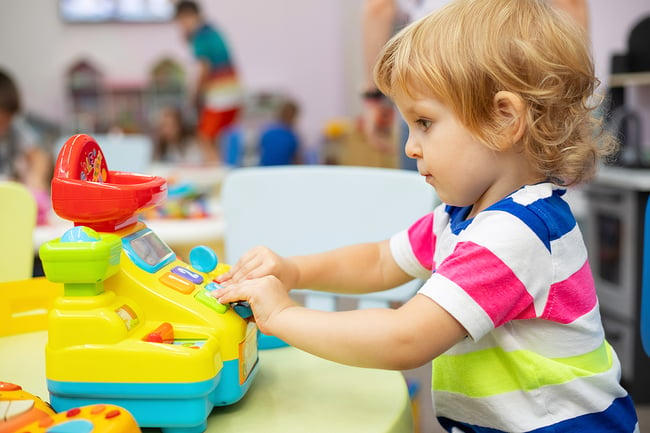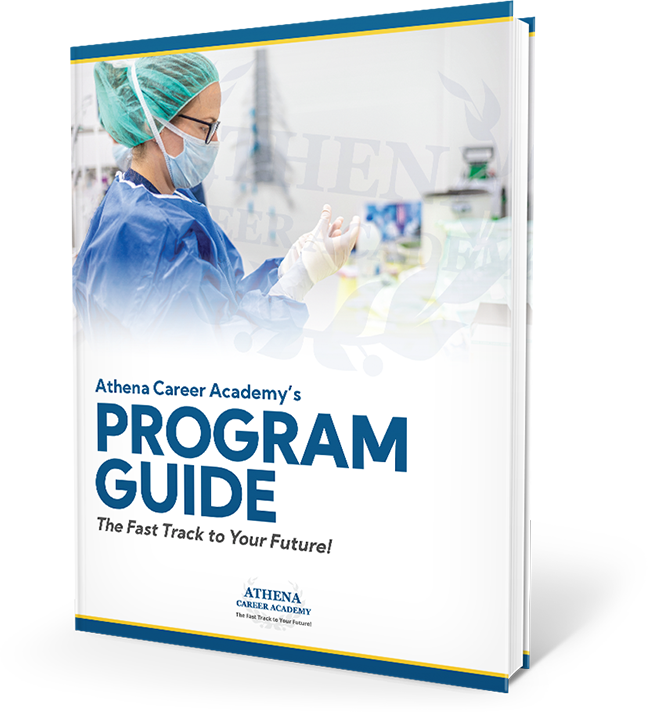Creative Ideas for Transitions and Routines in a Preschool Classroom
Posted On Nov 17, 2023
A significant portion of the preschool curriculum is teaching young students how to navigate in an educational setting. Lining up, taking turns, and moving through a schedule are all skills that need to be developed when students are young, but these skills can be challenging. Every preschool teacher will find a routine that works for their class, but it’s always good to have a bag of tricks to draw from.

Why is Developing Routines So Important in a Preschool Classroom?
If you went through your days without a good idea of what was coming next, you may feel unsettled, wondering, and maybe even worrying about what will happen later in the day. A daily routine, even just a rough outline, gives us a sense of stability. Even if we don’t know exactly what will happen at every moment during the day, we have a general idea of the structure and can anticipate the next stage accordingly. Since preschoolers haven’t yet mastered the skill of telling time or reading a schedule, having a routine that can be relied upon in their preschool classroom helps these young students navigate their day.
When students feel like their days have consistency and predictability, they feel safe and secure. While a preschooler may not understand that their day begins and ends at certain times, they do understand the idea that they’ll always have the same routine for arrival, circle time, snack, stories, outdoor play, and more. When preschoolers know what to expect every day, they are likely to make good choices based on those expectations.
Best Routines to Build for Success in the Classroom
Visual cues work very well for young students. Find a daily schedule that will work for your classroom and stick to it as closely as possible. Many preschool teachers have found that posting their schedule with pictures or symbols and moving an arrow through the day to indicate where you are at any given time is very comforting for preschoolers. Being able to point to where you are in the day and what is coming next is very helpful.
Preschoolers like to have a sense of order in their routines for each activity. For example, the routine for arrival should include tasks like hanging your coat, putting your things in your cubby, putting a magnet on your name, and beginning your morning independent activity. Not only will routines for each activity give the students stability, but they will ensure that no steps are missed. If “put your take home folder” in your backpack or “wash your hands before snack” is part of the regular routine, students are far less likely to forget what to do, and the chaos during these times will be eliminated – or at least reduced.
Transition Activities
Transition activities are ways to make moving from one activity to another smooth. Many young students have difficulty stopping an activity they are enjoying, even when they know what to expect. A transition activity can help manage the shift. When young students feel out of control during a transition, it is usually because they are overwhelmed, frustrated, or disappointed.
One of the most important pieces to remember about transitions is the preparation stage. Even with a fun activity designed to move students from one space to another, if the students feel jolted out of an activity where they weren’t “finished”, they may react negatively. Giving advanced warnings can make a big difference for preschoolers.
Some teachers find that a visual timer is a good way for students to see how much time they have remaining before it’s time to move on, some teachers will dim the lights, some will indicate that it’s almost time to move on by playing a song, and some will let the students know verbally that their time at the current activity is almost up. Different children often need different strategies at this age, so it is well worth it to experiment with a few different ideas about how to approach transitions and see what works for you and your class.
The most important thing to remember is to stay flexible and positive. Acknowledge the difficulty of moving on from an activity the child was engaged in, and let them know when they’ll be able to do that activity again. When students transition well, give them praise. Many preschool students respond well to positive reinforcement that specifically points to what they are doing at the moment.
Fun Transition Ideas that Will Engage the Preschool Class
When the transition activity is enjoyable, students are more likely to be on board. Some of the most successful ideas for preschool transitions include:
-
Music
Students pick up on simple songs very easily, and singing a “clean up”, “line up”, or “get ready” song will often get students singing along as they move to the next activity.
-
Transition Objects
Sometimes preschoolers respond well to transitioning something else along with them, which can give them a sense of control. Let them take a small figure with them throughout the day, moving that object to each activity.
-
Movement Challenges
Challenges and games are fun for preschool students. When they have the chance to hop on one foot, walk like a crab, or tiptoe to the next spot, they are often eager to do so.
-
“Beat the Clock”
Preschoolers love to “win”. Set an attainable time for the transition, and challenge students to clean up from their previous activity and move onto the next before the timer goes off or song ends.
Preschoolers like to have a sense of control about their day. When they feel involved in the schedule, routines, and transitions, they are far more likely to comply. When students begin to transition independently and successfully, you will know that you have prepared them well for kindergarten. If you’ve always thought you’d be a great preschool teacher, contact Athena Career Academy to learn more about our comprehensive early childhood education degree program.
Recent Posts
Categories
- Flexible Class Schedule
- Early Childhood Education
- Clinical Medical Assistant
- Medical Assistant
- Accredited
- Medical Assistant Program Toledo, OH.
- MA Program
- ECE
- preschool teacher
- CMA
- Administrative Medical Assistant
- Practical Nursing
- Nursing School
- Nursing
- Early Childhood Education Degree
- LPN to RN
- Certified Medical Assistant
- Early Childhood Educator
- Become a Teacher
- Nursing Career
- RN
- Childcare Teacher
- Nursing School Toledo
- Practical Nurses
- Childcare Director
- Nursing Education
- Registered Nurse
- LPN
- Toledo Ohio Nursing School
- Teaching Degree
- Become a Nurse in 12 Months
- Nursing Career Opportunities
- Nursing School Preparation
- Practical Nursing Jobs
- Medical Coding and Billing
- DayCare Teacher
- Nursing Salaries
- Nursing School Costs
- PN to RN
- Career Training
- Nursing School Tuition
- Nursing School Financial Aid
- Phlebotomist Technician
- Practical Nurse Salaries
- EKG Technician
- nurse burnout
- #nursesunite
- Insider
- Phlebotomy Technician Salary
- Uncategorized
- resume
Contact us
For News, Resources, and Conversations:
Get your FREE 2022 Athena Career Academy Program Guide
The best way to get to know Athena Career Academy is to see what we offer. Download our program guide to learn more. Take the fast track to your future today!
An exciting career can be yours in just one year!
Discover how Athena Career Academy can help you reach your medical career goals fast.
Accrediting Agencies
Athena Career Academy is accredited by the Commission of the Council on Occupational Education. The school is registered with the Ohio Board of Career Colleges and Schools; State of Ohio – School Registration Number – 10-09-1943T and operates under the authority of the Ohio Board of Nursing. Please contact the Student Operations Manager for more information.

